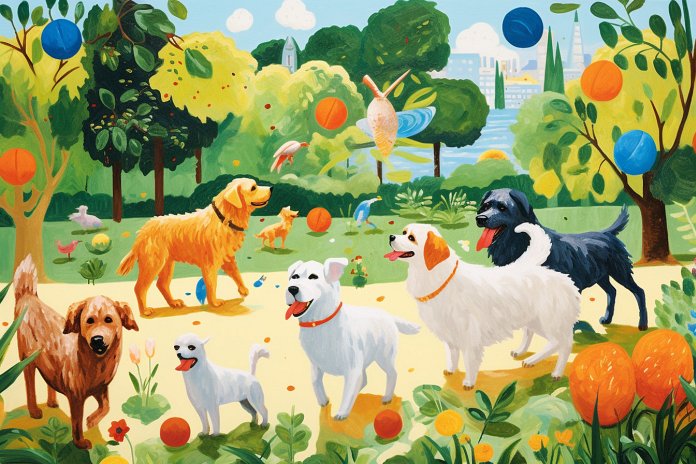
Seeing colors might not be easy for dogs, but they are better at it than many people think. Despite the common misconception that dogs are colorblind, they can actually see in color. However, the colors they see and the way they perceive them are different from how we do. Dogs have a limited color range and can’t distinguish between red and green.
What Colors Can Dogs See?
Early research suggested that dogs could only see in black, white, and shades of gray. However, we now know that dogs can perceive color. They can see green but have trouble distinguishing it from its surroundings. Dogs perceive green, yellow, and red as the same yellowish hue. They may be able to differentiate between these colors if there are differences in brightness.
Dogs perceive blue and purple as a second hue, and cyan and magenta as gray. So, they see the world in blue, yellow, and gray rather than black and white.
Body Language
To determine if a dog is using its vision to focus on an object, observe their body language. Signs include staring, being alert, turning their head, and having their ears up. Other signs of concentration include focusing, ignoring distractions, not blinking, and following an object with their eyes.
The Science of Dogs Seeing Green
To understand how dogs perceive colors, we need to look at their eyes. Dogs have two color-sensitive cone cells, while humans have three. Dogs have cones for yellow and blue, similar to red-green color blindness in humans. Dogs see the world in shades of yellow, blue, and gray, including dark and light variations of these colors.
Studies have shown that dogs struggle to distinguish between the colors green and red. This was demonstrated through tests where dogs had to identify the different colored panel to receive a treat.
Adjusting to Your Dog’s Vision
Knowing that dogs have limited color vision, it’s important to consider this when training or playing with them. Choose toys and training aids in colors other than red or green. Look for products in bright shades of blue or yellow. When teaching your dog to fetch or find objects, avoid using red or green items. Lastly, be patient with your dog if they don’t see something you want them to. They may not have noticed it because it blends in with the surroundings.
Dogs may have trouble distinguishing between red and green, perceiving them as the same yellowish hue.

Tips & Things to Know
1️⃣ Dogs can see in color, but their perception of colors is different from ours. They have trouble distinguishing between red and green and see yellow, green, and red as a similar yellowish hue.
2️⃣ Dogs’ ability to detect colors is similar to that of a person with red-green color blindness. They see the world in shades of yellow, blue, and gray.
3️⃣ When training or playing with your dog, choose toys and objects in colors other than red or green. Opt for bright shades of blue or yellow to make it easier for your dog to see and distinguish objects.
Frequently Asked Questions, Answered ✅
1. Are dogs really colorblind?
No, dogs are not colorblind. They can see colors, but their perception of colors is different from humans.
2. Can dogs see green?
Dogs can see green, but they have trouble distinguishing it from other colors. They perceive green, yellow, and red as the same yellowish hue.
3. What colors can dogs see?
Dogs can see shades of blue, yellow, and gray. They perceive blue and purple as a second hue, and cyan and magenta as gray.
4. How do we know about dogs’ color perception?
Studies have been conducted using color tests, such as showing dogs panels of different colors and rewarding them for identifying the different one. These studies have helped us understand how dogs perceive colors.
5. How should we adjust our interactions with dogs based on their color vision?
It is recommended to choose toys and training aids in colors other than red or green, as dogs have trouble distinguishing between these colors. Bright shades of blue or yellow are better options. It’s also important not to get frustrated if dogs don’t see objects of the same color as their surroundings, as they may not have noticed them.